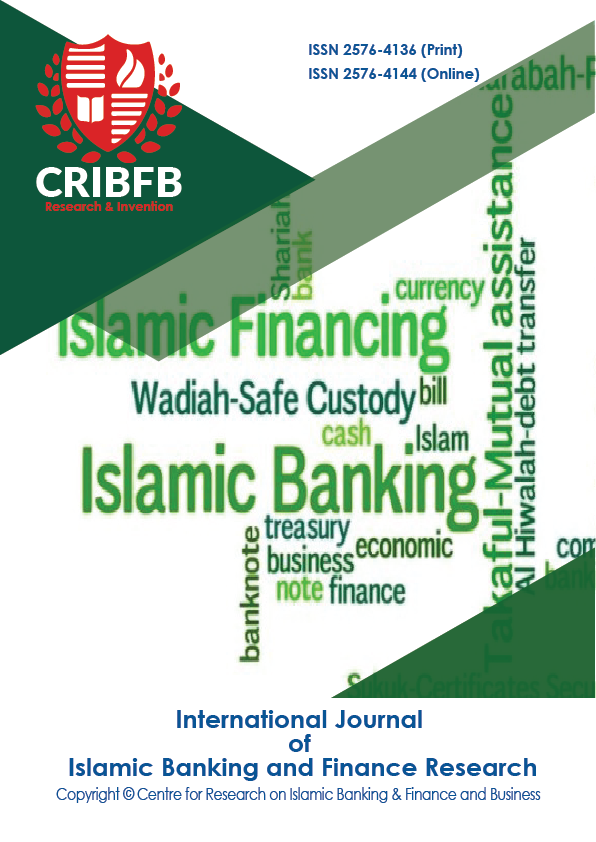DESIGN OF SALES PERFORMANCE DASHBOARD BASED ON SALES FUNNEL & SALES FORCE AUTOMATION THEORIES: A CASE OF AN INDONESIAN ISLAMIC BANK
Main Article Content
Abstract
One of the bank management concerns related to sales performance is ensuring sales people perform the sales process correctly. Unfortunately, most sales people have problems in the sales process, which causes their low performance. Islamic banks in Indonesia also experienced this situation, so a strategy needs to overcome this problem. For instance, using surveillance tools such as Sales Force Automation (SFA) with sales funnel theory. An SFA tool is a sales system connected to computers and internet networks. It monitors sales processes and results, manages contacts, forecasts sales, and analyzes sales performance daily and monthly. Additionally, it helps sales forces to measure the ability to achieve targets, plan sales strategies and customer approaches, and increase work motivation. Also, raise awareness of developing skills, and provide up-to-date information to supervisors about sales force performance to determine the proper training. Therefore, the use of SFA tools is expected to increase the productivity of sales people in optimizing the fulfillment of deposit targets in Islamic banking. This paper reports the SFA design in the form of a dashboard model with a visual sales to funnel that shows the function of the salesperson in conducting the sales process ends with the results.
JEL Classification Codes: D40, E50, M31.
Downloads
Article Details
Section
How to Cite
References
Barker, R. M., Gohmann, S. F., Guan, J., & Faulds, D. J. (2009). Why is my sales force automation system failing? Business Horizons, 52(3), 233–241. https://doi.org/10.1016/j.bushor.2009.01.001
Baysan, C., Bertman, A., Maynigo, R., Norville, G., Osborne, N., & Taylor, T. (2005). The design and development of a sales force automation tool using business process management software. Proceedings of the 2005 IEEE Systems and Information Engineering Design Symposium, 318–327. https://doi.org/10.1109/sieds.2005.193274
Beltran, D. J., Kangleon, Y., Balan, A. K., & De Goma, J. (2021). Credit card sales performance dashboard. Proceedings of the International Conference on Industrial Engineering and Operations Management (pp. 1-12), Singapore. Retrieved from https://scholar.google.co.id/scholar?hl=en&as_sdt=0%2C5&q=Credit+Card+Sales+Performance+Dashboard+&btnG=
Berry, L. L. (2002). Relationship Marketing of Services Perspectives from 1983 and 2000. Journal of Relationship Marketing, 1(1), 59–77. https://doi.org/10.1300/J366v01n01_05
Borg, S. W., & Young, L. (2014). Continuing the evolution of the selling process: A multi-level perspective. Industrial Marketing Management, 43(4), 543–552. https://doi.org/10.1016/j.indmarman.2014.02.013
Boujena, O., Johnston, W. J., & Merunka, D. R. (2009). The benefits of sales force automation: A customer’s perspective. Journal of Personal Selling and Sales Management, 29(2), 137–150. https://doi.org/10.2753/PSS0885-3134290203
Department of Islamic Banking. (2015). Indonesia's Islamic Banking Roadmap 2015-2019.Pdf (p. 53). Retrieved from https://www.ojk.go.id/id/kanal/syariah/berita-dan-kegiatan/publikasi/Documents/roadmap-pbs_2015-2019.pdf
Dissanayaka, D. M. M. S. D. (2019). Sales Force Mobile Application for Arpico Local Manufacturing and Distribution Sector (Unpublished master theses) University of Colombo, Colombo, Srilanka.
Financial Services Authority. (2018). Indonesian Islamic Banking Snapshot, 1–8. Retrieved from https://www.ojk.go.id/id/kanal/syariah/berita-dan-kegiatan/publikasi/Documents/Pages/Snapshot-Perbankan-Syariah-Indonesia-Desember-2018/
Grublješič, T., & Čampa, N. (2016). The impact of the IS on the effectiveness of the Sales Funnel Management as a part of CRM in an automotive company. Online Journal of Applied Knowledge Management, 4(2), 74–92. https://doi.org/10.36965/ojakm.2016.4(2)74-92
Jelinek, R. (2013). All pain, no gain? Why adopting sales force automation tools is insufficient for performance improvement. Business Horizons, 56(5), 635–642. https://doi.org/10.1016/j.bushor.2013.06.002
Malek, S. L., Sarin, S., & Jaworski, B. J. (2018). Sales management control systems: review, synthesis, and directions for future exploration. Journal of Personal Selling and Sales Management, 38(1), 30–55. https://doi.org/10.1080/08853134.2017.1407660
Pauwels, K., Ambler, T., Clark, B. H., LaPointe, P., Reibstein, D., Skiera, B., Wierenga, B., & Wiesel, T. (2009). Dashboards as a service: Why, what, how, and what research is needed? Journal of Service Research, 12(2), 175–189. https://doi.org/10.1177/1094670509344213
Roff-Marsh, J. (2004). How to build a high-throughput sales process. Proceedings of the Theory of Constraints International Certification Organization Conference, Miami, Florida. Retrieved from https://salesprocessengineering.net/2008/07/18/how-to-build-a-high-throughput-sales-process/
Rostamian, B., & Sadrabadi, M. M. (2016). The Relation between Social Intelligent and Service Presentation Quality (Case Study: Selected Branches of Melat Bank of Isfahan City). Procedia - Social and Behavioral Sciences, 230(May), 290–297. https://doi.org/10.1016/j.sbspro.2016.09.037
Stoop, J. (2009). Developing a reference model for KPI and Dashboard reporting in Sales & Marketing. University of Twente, Enschede, Netherlands. Retrieved from http://essay.utwente.nl/60699/
Yan, J., Gong, M., Sun, C., Huang, J., & Chu, S. M. (2015). Sales pipeline win propensity prediction: A regression approach. Proceedings of the 2015 IFIP/IEEE International Symposium on Integrated Network Management, IM 2015, 854–857. https://doi.org/10.1109/INM.2015.7140393




